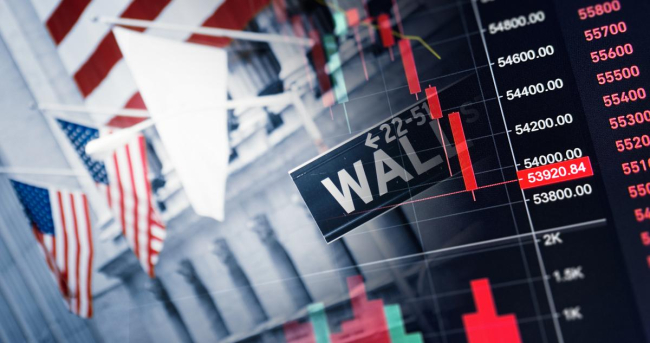You have /5 articles left.
Sign up for a free account or log in.

From big gains in fiscal year 2021 to a poor performance in fiscal year 2022, colleges are seeing a reversal in endowment performance.
franckreporter/iStock/Getty Images Plus
After booming returns from a red-hot market last year, endowments across higher education have taken a hit this year, with declines seen across the sector.
As many colleges begin to make their endowment results available, the numbers coming out show a tale of two years—one up, the other down—which experts attribute to market volatility.
Higher education endowments had a median return of 30.1 percent in fiscal year 2021. But analysis from this year shows declines; Wilshire Trust Universe Comparison Service reported earlier this year that college endowments fell by a median of 10.2 percent in fiscal year 2022, which closed on June 30, according to data provided to Inside Higher Ed. A more recent estimate from Cambridge Associates puts those losses at 7.8 percent.
Reversal of Fortunes
Washington University in St. Louis saw its endowment returns soar to 65 percent last year. But this year the university reported a loss of 10.6 percent. A spokesperson did not comment on the abrupt turnaround—which is in line with what many other institutions reported—but said the university’s endowment report would be available in the coming weeks.
Harvard University—the largest endowment in higher education, valued at slightly more than $50 billion—saw a less dramatic reversal of 1.8 percent, which is still a big fall from the 34 percent return it enjoyed in FY 2021.
“This is a very good result given the significant declines in both the equity and bond markets in the past year,” university officials wrote in a letter attached to Harvard’s Annual Financial Report.
Yale University, which has the second-largest endowment at $41 billion, managed a positive return for fiscal year 2022 of 0.8 percent—though a far cry from last year’s 40.2 percent.
Among the country’s other richest institutions, Stanford University’s endowment fell by 4.2 percent; Princeton University saw a decline of 1.5 percent; the Massachusetts Institute of Technology experienced a loss of 5.3 percent; and the University of Texas/Texas A&M Investment Management Company saw a decline of 6.2 percent. Returns for the University of Pennsylvania were flat, and the University of Michigan saw returns grow by 2.2 percent for FY 2022.
By contrast, most of those institutions enjoyed returns in the 40 to 50 percent range in FY 2021.
Universities with smaller endowments were less likely to release information on their returns. A spokesperson for the University of Notre Dame, for example, declined to provide those data and noted figures would be available in January as part of an annual report.
The Long View
While the results of FY 2022 may look ugly for many institutions, financial experts say there’s no reason for colleges and universities to panic given the long-term nature of endowments. The latest fiscal year is just one of many in the life of an endowment, said Tim Yates, president and CEO of Commonfund Asset Management. He said no one should get too excited or dismayed about a single year’s performance and that ups and downs are inherent in managing an endowment. He also cautioned institutions against getting hung up on peer comparisons, noting that every endowment is different in terms of risk profile, liquidity, giving trends, operating budgets and more. (This paragraph has been updated to include the proper name of Yates' company.)
He pointed out that FY 2022 was a difficult one for public and private equity markets.
“The typical endowment has meaningful equity risk, broadly defined, across the portfolio,” Yates said. “It makes sense that when the equity markets go up, endowments go up, and when equity markets decline, there’s going to be a commensurate impact on endowment performance.”
Given the market challenges year to year, the returns of FY 2021 were impossible to replicate, and some financial experts note that stock market woes are showing up in endowment performance.
“Over all, it would be almost impossible to have a strong return in an environment where both stocks and bonds are dropping,” said John Griffith, an endowment specialist at the investment firm Hirtle Callaghan.
Griffith recommended looking at returns over a three- to five-year period.
“What’s really important is that your endowment keeps pace with inflation and grows over time. And if you focus too much on an annual basis, you’re not really going to get a true picture of what’s happening,” Griffith said. “You do have schools and organizations that perform well over long periods of time, but there’s always volatility within that from year to year.”
Experts noted that colleges and universities have “smoothing mechanisms” in place to adjust endowment spending policies to make up for years with dismal returns—such as FY 2022.
“The typical college or endowment has a three-year average spending policy, which means they take the average of 12 quarters or three years or some calculation to try to smooth out spending. Any one year in and of itself doesn’t have a huge impact because of the smoothing mechanism,” Yates explained.
Griffith noted that with rampant inflation and a lousy return, many institutions may need to consider reducing the share of the endowment that they spend on an annual basis.
“I think there’s going to be a lot of pressure on schools to continue to reduce spending,” Griffith said. “Endowment spending has been on the decline for over a decade now. And I think the pressure to reduce endowment spending will increase if the stock market doesn’t recover.”
He added that a difficult market environment this year is colliding with other challenges in higher education, such as dwindling enrollment and worker demands for higher wages. If colleges—particularly the least wealthy, whose budgets depend on endowment spending—are unable to cut such spending, they may need to consider taking greater investment risks, he said.
Divestment Pressures
While the higher education sector saw a difficult year for endowments in a tough stock market, institutions also faced increasing pressure to divest from fossil fuels—even as oil and gas prices have boomed.
Some universities have yielded to those demands while others have held firm.
And divestment pressures aren’t limited to oil and gas. Beyond fossil fuels, students have pushed universities to divest from Chinese firms that profit from human rights abuses (a move that has caught the attention of Congress) and from companies that profit off war and conflict. Institutions have also faced pressure to divest from companies with holdings in private prisons.
Ultimately, Griffith said, investment managers in higher education have to balance the end goal of the university’s mission against pressures to divest. That might mean an investment officer is being asked to make a moral decision that conflicts with a sound financial move.
“With very strong returns in the oil and gas markets, people who divested from oil and gas would have had a significantly lower return than people who did not. I think, from my perspective, you have to weigh whether divestment is worth what you did not get in returns for the last few years,” Griffith said.




